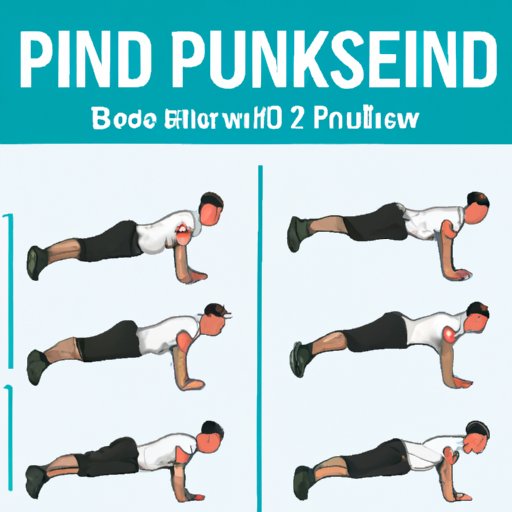Introduction
The plank exercise is one of the most basic yet effective core exercises out there. It strengthens your abdominals, back, glutes, and shoulders all in one motion. This exercise can help improve posture, reduce lower back pain, and burn calories. It’s an excellent addition to any workout routine.
Definition of Plank Exercise
A plank exercise is a bodyweight exercise that involves holding a position similar to a push-up, but with your elbows and forearms on the ground. From this position, your body should be held straight, forming a straight line from your shoulders to your ankles. Your core should remain engaged throughout the exercise.

Benefits of Doing a Plank Exercise
The plank exercise offers many benefits, including improved posture, increased strength and stability, and reduced back pain. By strengthening your core muscles, the plank helps to support your spine and protect it from injury. Additionally, planking helps to improve balance and coordination, which is important for everyday activities such as walking, running, and lifting.
Step-by-Step Guide to Doing a Plank Exercise
The plank exercise may seem intimidating at first, but with practice you’ll soon master the form. Here’s a step-by-step guide to doing a plank exercise correctly.
How to Begin the Exercise
Start by lying on the floor face down. Position your elbows directly beneath your shoulders. Make sure your feet are hip-width apart and your toes tucked under. Engage your core and press up onto your toes and forearms, making sure your body is in a straight line. Hold this position for 10 seconds and then rest.
How to Progress and Increase Difficulty
Once you’re comfortable with the basic plank exercise, you can start to increase the difficulty. To do this, add a few extra seconds to each hold, or try lifting one arm or leg off the ground while maintaining the plank position. You can also try adding weights or a stability ball to make the exercise more challenging.
A Beginner’s Guide to Mastering the Plank Exercise
If you’re a beginner, here are some tips and tricks for perfecting your plank form.
Tips and Tricks for Perfecting Form
Make sure your body is in a straight line from your head to your toes. Keep your neck relaxed and don’t let your chin drop toward your chest. Keep your core tight and your glutes squeezed. Finally, make sure your elbows are directly beneath your shoulders and your hands are flat on the ground.
Common Mistakes to Avoid
One common mistake is allowing your hips to sag during the plank exercise. This puts unnecessary strain on your lower back. Another mistake is not engaging your core enough. Make sure your core is tight and your glutes are squeezed throughout the entire exercise.
How to Incorporate the Plank Exercise into Your Workout Routine
The plank exercise is a great addition to any workout routine. Here are some tips for incorporating it into your routine.
Different Ways to Include Planks in a Workout
You can do planks as part of a circuit workout, or you can do them on their own. If you’re looking for a challenge, you can do a series of planks for a set amount of time. For example, you can do a 30-second plank followed by a 15-second rest, and repeat for 5 minutes.
Frequency and Duration of Plank Exercises
For beginners, aim to do planks 2-3 times per week. As your strength and endurance improves, you can increase the frequency and duration of your planks. Ultimately, how often and how long you plank depends on your fitness goals and level of comfort.

Variations on the Plank Exercise to Keep Things Interesting
To mix up your plank routine, try some of these variations.
Alternating Arm and Leg Plank
This variation is great for challenging your balance and coordination. Start in the standard plank position. Then, lift your right arm and left leg off the ground. Hold for a few seconds and then switch sides. Repeat for 30 seconds.
Side Plank
The side plank is a great way to target your obliques and outer thighs. Lie on your side with your feet stacked on top of each other and your elbow directly beneath your shoulder. Push through your forearm and feet to lift your hips off the ground. Hold for 30 seconds and then switch sides.
Reverse Plank
The reverse plank is a great way to strengthen your upper body. Start by sitting on the ground with your legs extended in front of you and your arms behind you, palms facing down. Push through your arms and feet to lift your hips off the ground. Hold for 30 seconds and then release.
Conclusion
The plank exercise is a simple yet effective bodyweight exercise that can help you build strength and stability. With practice, you can master the form and progress to more difficult variations. Incorporate the plank exercise into your workout routine for maximum benefits.
In summary, the plank exercise offers many benefits, including improved posture, increased strength and stability, and reduced back pain. There are several variations to keep things interesting, and you can incorporate planking into your workout routine 2-3 times per week. With practice, you can perfect your form and reap the rewards of this simple yet effective exercise.
(Note: Is this article not meeting your expectations? Do you have knowledge or insights to share? Unlock new opportunities and expand your reach by joining our authors team. Click Registration to join us and share your expertise with our readers.)
